Acne Treatment Selector
Find Your Perfect Acne Treatment
Answer a few simple questions about your skin and acne to get personalized recommendations for your treatment options.
Step 1: Your Acne Type
Step 2: Your Skin Sensitivity
Step 3: Your Treatment Timeline
When it comes to fighting Differin (adapalene) is a prescription‑strength retinoid gel approved for acne vulgaris, many people wonder how it stacks up against over‑the‑counter options.
Key Takeaways
- Differin works from inside the pore, reducing blockage and inflammation.
- Topical benzoyl peroxide kills bacteria fast but can sting.
- Salicylic acid exfoliates gently, ideal for mild breakouts.
- Azelaic acid offers anti‑inflammatory benefits with minimal irritation.
- Tretinoin is a stronger retinoid for severe acne but requires careful monitoring.
What is Differin (Adapalene)?
Differin contains adapalene, a third‑generation retinoid that targets the three main causes of acne: excess oil, clogged pores, and inflammation. It’s available in 0.1% gel (over‑the‑counter in many countries) and a 0.3% prescription strength for tougher cases.
How Differin Works
The active molecule binds to retinoic acid receptors in the skin, normalising the shedding of skin cells. By preventing the formation of micro‑comedones, it reduces the chance of a whitehead turning into a red, inflamed pustule. Because it works at the cellular level, results typically appear after 4-8 weeks of consistent use.
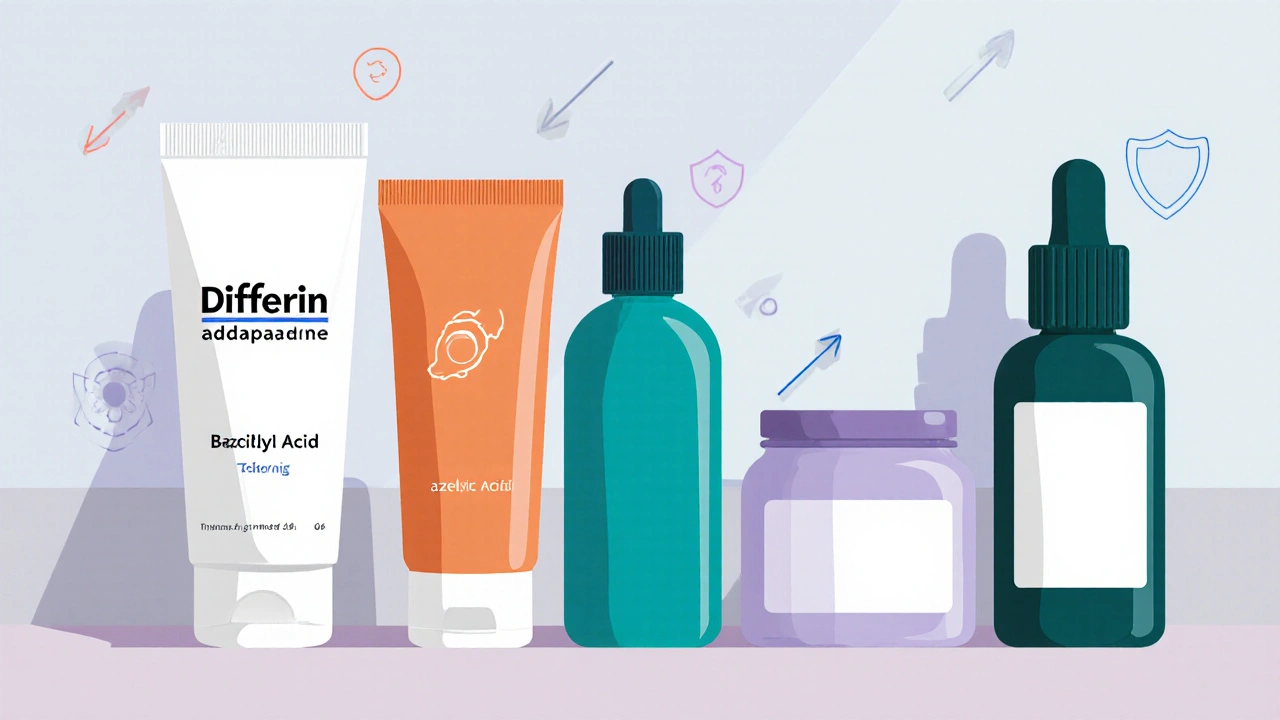
Common Alternatives at a Glance
Acne vulgaris can be tackled with several other ingredients, each with its own strengths and drawbacks.
Benzoyl peroxide is a bacteria‑killing agent that also helps unclog pores. It’s found in strengths from 2.5% to 10% and works within days, but it can cause dryness and a noticeable bleach‑like taste if it contacts fabrics.
Salicylic acid is a beta‑hydroxy acid (BHA) that dissolves the glue holding dead skin cells together. Low concentrations (0.5%-2%) are gentle enough for daily use, while higher doses are reserved for spot‑treatment.
Azelaic acid offers both anti‑bacterial and anti‑inflammatory effects. It’s especially popular for people who experience redness or post‑inflammatory hyperpigmentation after acne.
Tretinoin is the “classic” retinoid that predates adapalene. It’s more potent, making it suitable for severe cystic acne, but the price tag and irritation potential are higher.
Other options include topical Clindamycin (an antibiotic) and oral Doxycycline for inflammatory lesions, often used in combination with a retinoid.
Side‑by‑Side Comparison
| Ingredient | Primary Mechanism | Typical Strength | Best For | Pros | Cons |
|---|---|---|---|---|---|
| Differin (Adapalene) | Retinoid - normalises keratinisation | 0.1% (OTC), 0.3% (Rx) | Comedonal & inflammatory acne | Low irritation, works on oil production | Slow onset (4‑8 weeks) |
| Benzoyl Peroxide | Antibacterial & keratolytic | 2.5%‑10% | Sudden flare‑ups, oily skin | Rapid action, inexpensive | Can bleach fabrics, dryness |
| Salicylic Acid | Exfoliates inside pores | 0.5%‑2% | Mild to moderate breakouts | Gentle, good for sensitive skin | May not clear deep cysts |
| Azelaic Acid | Anti‑bacterial & anti‑inflammatory | 10%‑15% (OTC), 20% (Rx) | Redness, post‑acne marks | Reduces hyperpigmentation | Can cause tingling, pricey |
| Tretinoin | Strong retinoid - increases cell turnover | 0.025%‑0.1% | Severe cystic acne | Highly effective, proven decades | Higher irritation, prescription needed |
Choosing the Right Option for Your Skin
Start by asking yourself three simple questions:
- Is my acne primarily oily and congested, or inflamed and painful?
- How sensitive is my skin to stinging or redness?
- Do I need a fast‑acting solution or can I wait for gradual improvement?
If you tick “congested + low sensitivity”, Differin often wins because it targets the root cause without the harsh burn of benzoyl peroxide. If you’re battling a sudden breakout and need instant relief, a 2.5% benzoyl peroxide spot treatment can calm things down while you start a retinoid for long‑term control.
For people who can’t tolerate any retinoid irritation, salicylic acid or azelaic acid make good starter ingredients. They won’t overhaul oil production, but they keep pores clear and minimise redness.
When acne is severe-deep cysts, nodules, or scarring-combining a strong retinoid like tretinoin with an oral antibiotic such as doxycycline often yields the fastest results. This duo should always be overseen by a dermatologist.
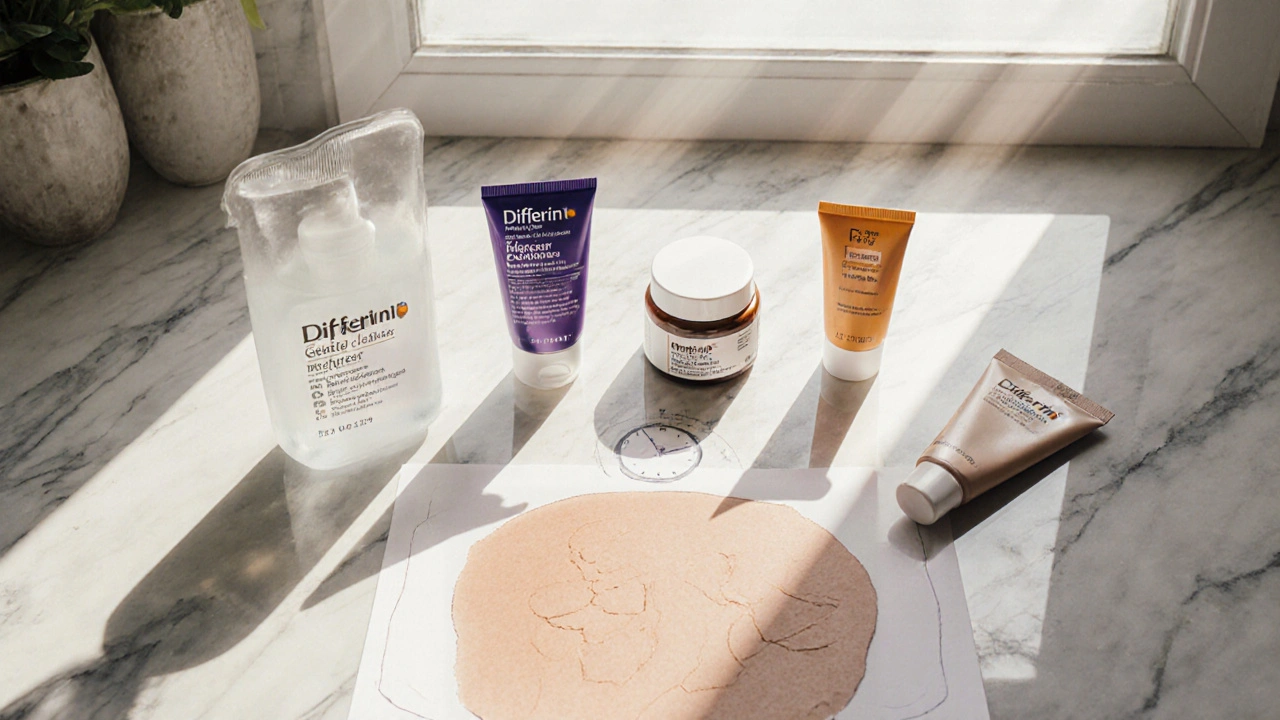
Potential Pitfalls and How to Avoid Them
Even the best product can backfire if used incorrectly. Common mistakes include:
- Skipping moisturiser: Retinoids and benzoyl peroxide strip the skin’s barrier. Pair any active with a non‑comedogenic moisturiser within 5 minutes of application.
- Applying too much: A pea‑sized amount of Differin covers the entire face. Over‑application won’t speed results, it will only increase irritation.
- Mixing incompatible actives: Using salicylic acid and benzoyl peroxide together can cause excessive dryness. Stick to one exfoliating agent per routine.
- Sun exposure: All retinoids increase photosensitivity. Daily SPF 30+ is non‑negotiable.
Next Steps
If you’re ready to start, follow this simple 4‑week plan:
- Day 1-3: Apply a gentle cleanser, then a thin layer of Differin every other night. Follow with a hydrating, fragrance‑free moisturiser.
- Day 4-7: Continue the same routine, adding a low‑dose sunscreen in the morning.
- Week 2-3: If your skin tolerates it, move to nightly use of Differin. Introduce a 2.5% benzoyl peroxide spot treatment for any active pimples.
- Week 4: Assess progress. If you see fewer new lesions and less redness, keep the routine for another 8‑12 weeks. If irritation persists, switch to a 0.5% salicylic acid cleanser and keep the retinoid every third night.
Always consult a dermatologist if you experience severe swelling, pain, or if acne does not improve after three months.
Frequently Asked Questions
Can I use Differin if I’m pregnant?
Adapalene is classified as Category C, meaning it should only be used if the benefits outweigh potential risks. Most doctors recommend waiting until after pregnancy.
How long does it take to see results with Differin?
Most users notice a reduction in new lesions after 4-6 weeks, with full improvement often visible by 12 weeks of consistent use.
Is it safe to combine Differin with benzoyl peroxide?
Yes, but keep them separate in time. Apply benzoyl peroxide in the morning and Differin at night, and always moisturise to reduce irritation.
What’s the difference between Differin and tretinoin?
Both are retinoids, but adapalene (Differin) is gentler on the skin and less likely to cause redness. Tretinoin is more potent and may work faster for severe acne but typically requires stricter monitoring.
Can I use over‑the‑counter salicylic acid while on Differin?
It’s possible, but start with a low‑strength salicylic acid cleanser and use it only a few times a week to avoid over‑exfoliation.


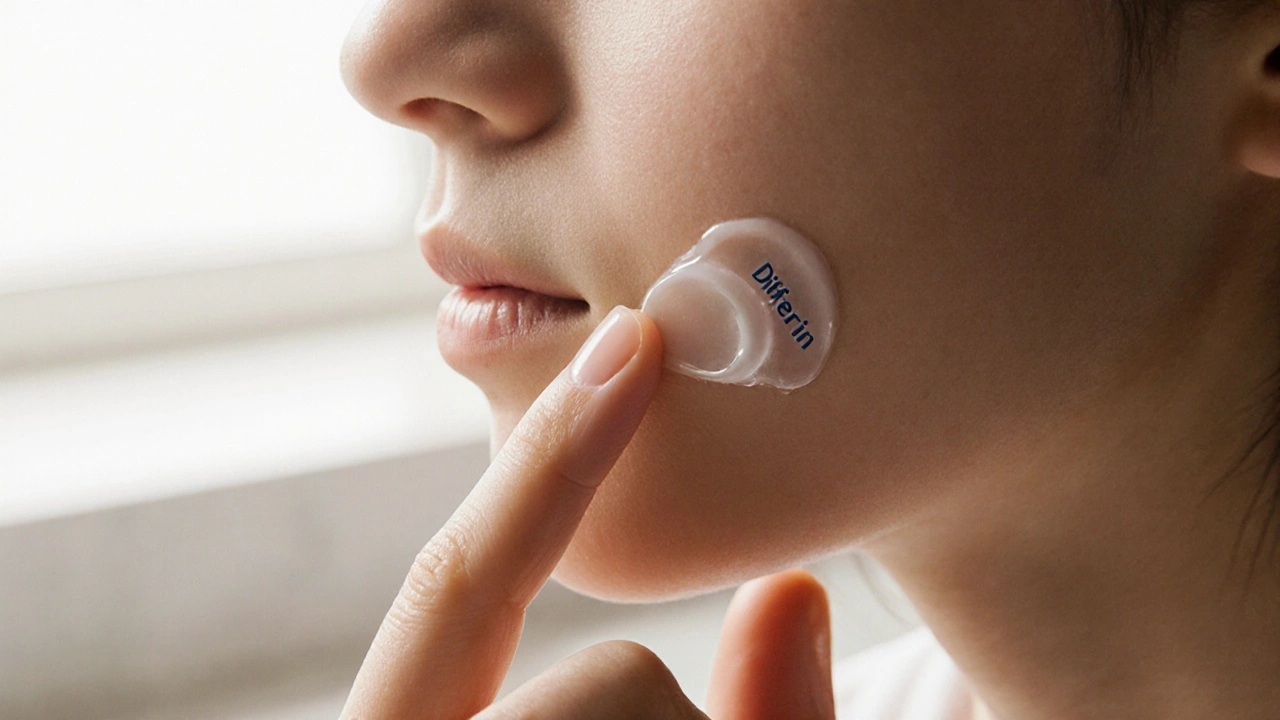




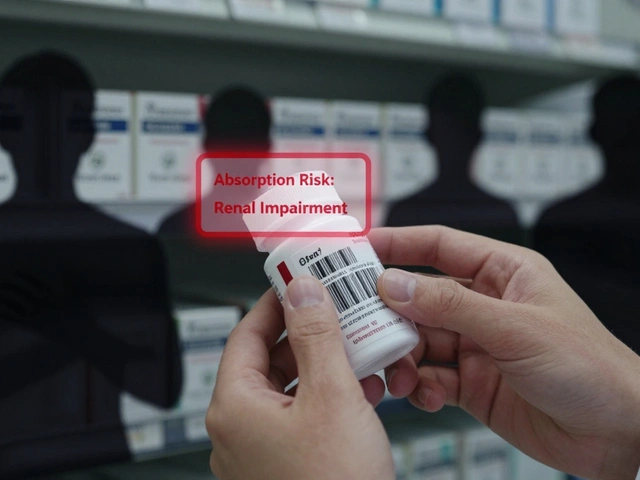
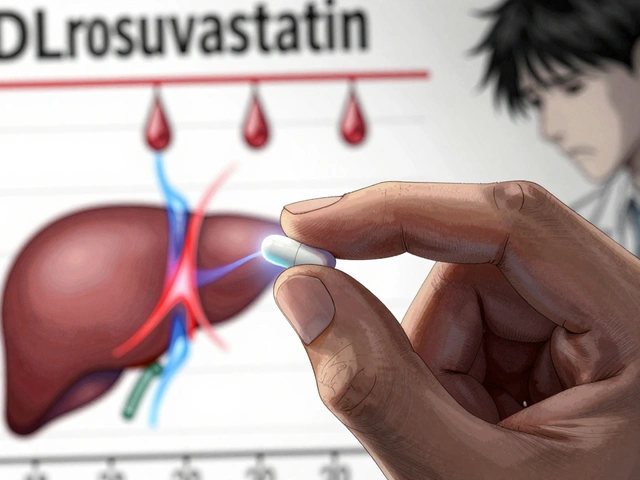
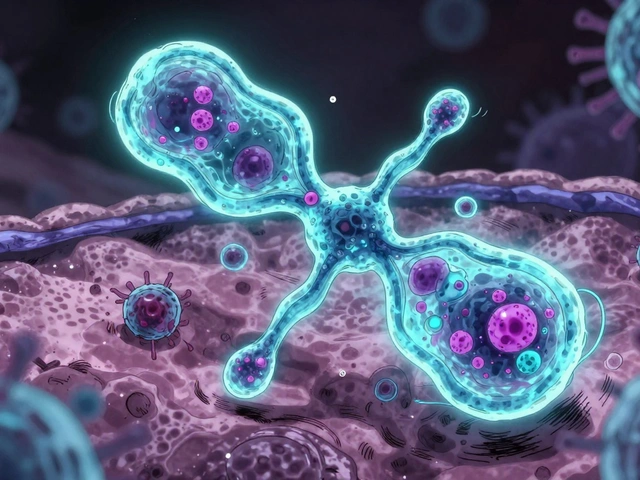

Lawrence Bergfeld
12 Oct 2025 at 13:28Stick to a pea‑sized dab of Differin and moisturize diligently; otherwise you’ll just irritate your skin!!